As an adult, you probably have your sleeping position preferences. Some people prefer to be on their backs and sides. A lateral position feels great, especially if you cuddle with someone at night. Everyone is different, and how you lie down is your prerogative. But what about babies? At that age, safety is a top concern among parents. Is letting your baby rest on their back safe? While they still may develop a preference, sometimes, the way the baby lies can put your baby at risk. Keep reading and learn more about safe resting positions. In this blog post, let’s find out and look at tips that can help keep your infant safe at night.
Sleep-related infant death is a risk a baby faces, but it can be avoided. The way your baby lies can either increase or decrease the risk of sudden infant death syndrome, SIDS. When your baby is young, back-napping can help reduce the risk of SIDS. What happens when your baby refuses to do so? Is it okay, and if not, how can you keep your baby in that position while asleep? Many parents don’t like waking babies from naps, but is it really necessary to wake them if they move? What do you do if you find your little one starts rolling to the side at an early age?
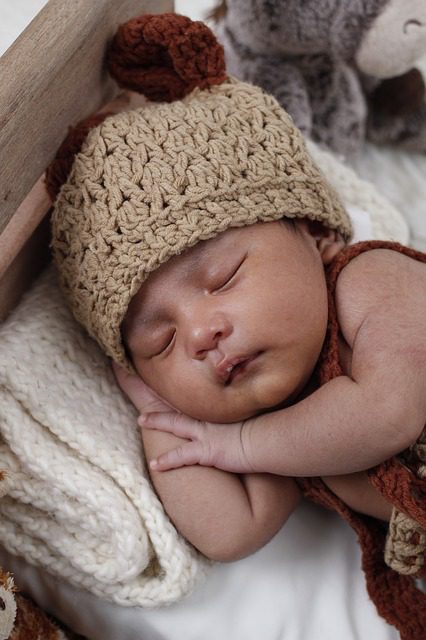
Is It Safe For Babies To Be Sleeping On Their Side?
As a parent, you know that letting a newborn baby sleep on its belly is bad while letting them nap on their back is the safest sleeping position. So what happens when it’s a little bit in between? Is it a normal thing, or is it worth stopping? You know you need to place your child on their back when you put them down for a nap. But, once they are sleeping, there’s a chance that they’ll move to other positions. Then what?
- While the baby sleeping in a lateral position is not necessarily bad, it can make your baby roll onto the belly. And that’s not good, especially regarding a baby as young as three months.
- Letting an infant’s stomach sleep is a leading cause of SIDS in infants. It can also lead babies to breathe in exhaled air.
- Lateral sleeping during nighttime sleep may also cause other problems, including choking, plagiocephaly (flat head shape), torticollis (head tilt), and more. Because of all these risks, finding ways you can stop your baby from rolling over during the night is much safer.
- Around that age, babies can’t roll independently yet. An older baby who can do so can roll over onto its back if a certain position is uncomfortable. But a young baby cannot do that and risks the chance of a position that can kill them.
- Sudden infant death syndrome is a real thing and not something that anyone should have to deal with if it can help.
- While lateral sleeping isn’t the main cause of SIDS, it may encourage babies to take a stomach sleeping position eventually, and that does increase the risk of sudden infant death syndrome.
Some medical conditions make a baby need to sleep on their stomach, but otherwise, don’t risk it. If you feel there is cause for concern, have your child medically reviewed by a professional to see if there is a reason for their need to sleep in that position. If your baby keeps rolling over, ensure they stay on their back, as this is the safest position. It is not healthy to have babies stay sleeping on their side if they cannot comfortably roll back over. It’s usually pretty easy to roll a baby onto their back without waking them up.
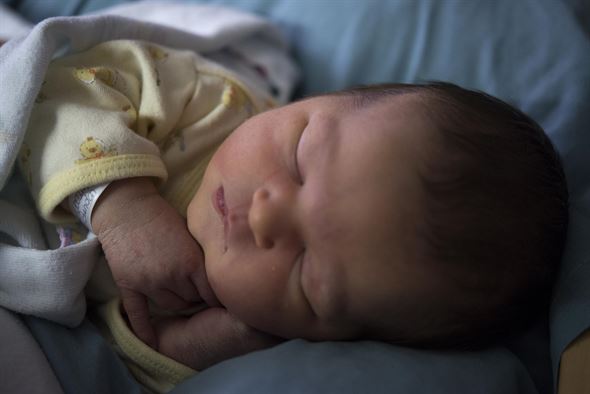
Sometimes, babies get into a lateral sleeping position independently, and you may wonder how it can be avoided. Putting the baby on their back is best, but what happens when they keep turning over? You might think, shouldn’t I leave my baby alone? No, you shouldn’t. Side sleeping at this age needs to be avoided. That said, a fetal position or newborn curl is generally considered safe if they have the muscle tone for it.
Baby Swaddling For Avoiding SIDS
Swaddling is when you wrap a baby in a swaddle during sleeping time, and it mimics the feeling of being in the womb. It’s tight enough to prevent the baby from moving but loose enough so it isn’t uncomfortable. Swaddling is worth trying if you have a baby always moving around. Until your baby reaches an age when he or she shows the first signs of being able to roll around independently, it’s worth trying.
- You can swaddle your baby with a blanket or a sleep sack with a Velcro swaddle piece going over the top.
- As the baby gets a little older, you can continue using the sleep sack as a wearable blanket.
- Some babies prefer this position. They may resist swaddling until they adjust.
- However, with time, your baby will love every bit of it.
- In this way, babies won’t engage in it since letting babies sleep in that position is unhealthy.
It’s crucial to establish healthy sleep habits and create a safe sleep space. Lay the baby down in the same position, and consider using a baby monitor to ensure continuous sleep safety. It’s essential to prioritize safe infant sleep by paying attention to their sleep position, fostering healthy sleep habits, and providing a secure sleep space.
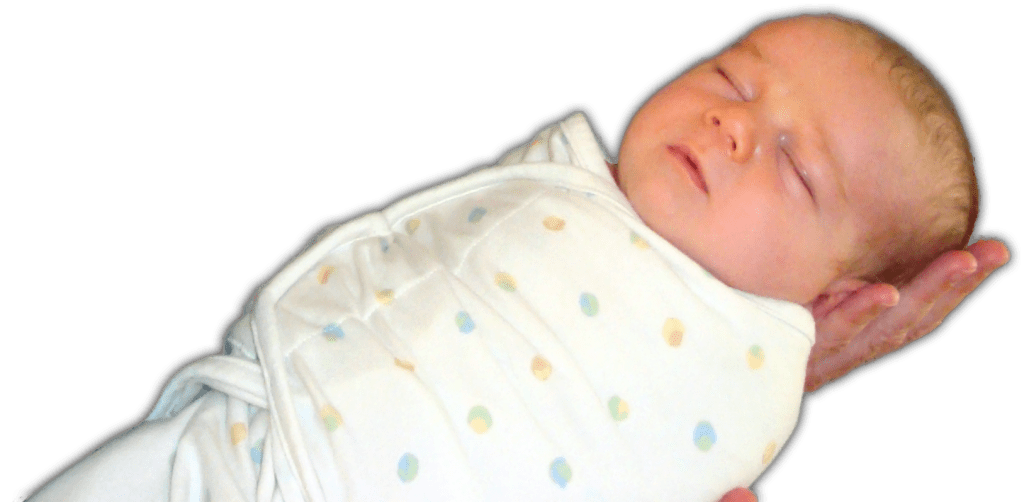
When Your Baby Starts To Roll
At around 3-4 months, a healthy baby starts learning to roll, and that’s when stomach sleeping occurs. When your baby is awake, teaching them to roll is a good thing, and it helps them grow their muscles. However, when they’re asleep, this is when it’s a problem. They may not be strong enough to roll onto their side, which is the main risk.
Their head is too heavy to lift and hold up for very long, posing a suffocation risk. That’s one of the reasons rolling over is so tough for infants. Letting the baby sleep on one side becomes a bit safer once their head is under better control. But even then, ensure your baby doesn’t always stay in one position or face the same way when they go back to sleep.
Keep them swaddled until then so they can sleep on their back. When it comes to the crib, clear it of any stuffed toys or objects, and ensure there is no loose bedding, like sheets, weighted blankets, pillows, or other objects, with which the baby could become entangled and cause accidental suffocation, following guidelines from the Consumer Product Safety Commission and peer-reviewed studies.
- Your crib should stay clear of anything and have nothing fancy in it.
- When your baby can roll around, it’s usually safe.
- Whatever your baby sleeps in, crib or bassinet, they shouldn’t have anything in bed with them, according to the American Academy of Pediatrics, not even stuffed animals or sleep positioners.
- A firm mattress is also recommended since it can prevent flat spots.
It can get frustrating. You can empathize with your baby. You may sleep on your side and have a harder time sleeping on your back, but preventing your baby from side-sleeping until they’re big enough to do so is the best way to ensure safe sleeping and prevent Sudden Infant Death Syndrome (SIDS). SIDS is no laughing matter; it can strike suddenly, as per its name.
While all of the exact causes are unknown, letting a baby sleep on his/her stomach is one reason why SIDS can happen. We know babies who sleep on their backs in cribs or bassinet beds are less likely to experience SIDS. Allowing the baby who is too young to continue sleeping in that position can turn out badly, so place the baby on their back to keep your baby safe at night.
Additionally, ensure that your baby sleeps in the same room as you during nap time. It is crucial to understand the importance of creating a safe sleep environment for their little ones. Many babies may spit up; having a clear sleep space can reduce the risk of suffocation.
When Does Your Baby Master Rolling Over?
Rolling over is the stage that precedes crawling. When the baby can easily roll, it can move around and sleep well. On average, the baby rolls over between 5 and 6 months and masters months or so later. There are a couple of early birds and some late bloomers in the field of rolling, so don’t think it’s a big deal if your baby rolls over later or earlier in life. It won’t affect their development. You don’t need to have your child medically reviewed unless they’re getting closer to 1 year or so and still haven’t made this milestone.
Tummy Time
One way to teach your baby how to roll over sooner is through tummy time. This is when you put your baby on for their tummy during playtime for a few minutes, increasing as the baby ages. This builds up their muscles, and it’s a good idea for any baby of any age. It’s something worth trying as soon as your baby is born.
- However, at the newborn stage, the baby can’t lie on their tummy for too long because of the baby’s head position.
- Usually, it’s just a few minutes, and then they can grow later with time.
- The baby’s head is very heavy, so developing the muscles in their necks and cores is necessary.
- When putting babies onto their tummy, please ensure you stay with them in case they get into trouble and need your help.
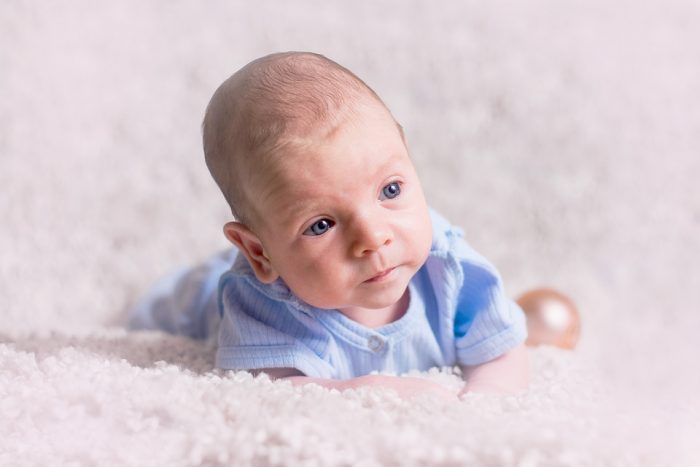
Baby Sleeping In A Lateral Position
The takeaway is that it takes a while for babies to master rolling, and a side-sleeping position must be avoided. They may roll to their stomach but are unable to roll back. With time, your baby can comfortably roll over and side sleep however they want. When your baby is rolling both ways, that’s a great thing and something you can be proud of. Your baby grows quickly, and watching them learn simple things like rolling feels so good.
Understand that it isn’t a bad thing once your little one is big enough to go from side sleep to stomach sleep, back to side sleep, and on over to back sleeping all on for their own. Their sleep positions are about so much more than just comfort. Side sleeping too early could ultimately cost their life, so stick to the National Institutes of Health and the American Academy of Pediatrics guidelines on safe baby sleep positions to ensure your baby’s health.
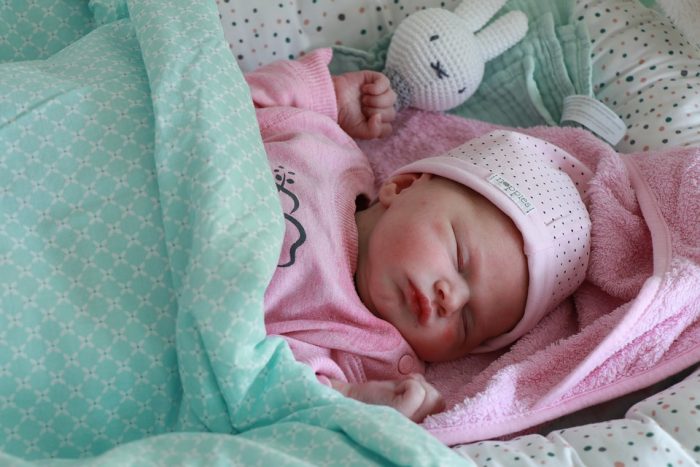
Babies Sleeping On Their Side: Conclusion
Your baby should not sleep on their side when they are three months of age. While the position itself won’t hurt them, it risks them rolling onto their stomach, where the risk of SIDS goes up. If you find them asleep on their side, gently roll them onto their back again. Always remember that it is unsafe for three-month-olds to be asleep in any position other than on their back. Swaddling the baby until they’re big enough to roll independently may be a good move.
With that said, you should still check up on your baby when they’re asleep to make sure that they don’t break out of position when they are asleep. If you’re concerned about your child’s safety because of side sleeping, you can call your pediatrician and have your baby medically reviewed. You’ll get to have all of your questions answered about side sleeping so you can feel more at peace when your baby is asleep.
Frequently Asked Questions
Is It Okay For A Baby To Sleep On Their Side?
Babies should be put to sleep lying on their backs, not their stomachs or sides, because that is their safest position. Sleep on their side or stomach is not normal for a three-month-old. Children who have been medically reviewed and found to sleep on their side are at a higher risk for SIDS.
Is It Okay To Let Half Yearlings Do Side Sleeping?
It is excellent for the baby to remain in the side sleeping position they choose if they roll over from front to back. If your 7-month-old can roll from back to tummy and tummy to back without your help, then side-lying should be just fine.

At What Age Can Babies And Toddlers Stomach Sleep?
Most babies start sleeping on their stomachs between 4 and 6 months, in some cases. However, it’s best if they are closer to 9 months or so before they start tummy sleeping.
How Do I Stop My Baby Napping On Their Side?
Newborns stay in the same position when they nap. It is not safe to sleep on their side for three months. The best way to prevent your baby is to lay them on their back. You can also try swaddling too. Many parents also recommend laying your baby on a firm sleeping surface in a safe infant sleeping environment.
Should Newborns Sleep On An Incline?
Experts and professionals warn parents never to allow a baby to sleep in rockers, car seats, and other products that hold an infant in an incline position. Medically reviewed cases have revealed that it can cut off their airflow, resulting in death.
Can I Let My Half-Yearling Sleep On His Stomach?
Yes, it’s okay to leave your baby in that position. Because by the time your child can do this, the risk of SIDS is much lower.

Do Babies Sleep Better On Their Stomachs?
Though it is common, many experts urge parents to put a baby to bed on his/her back and never on his/her belly. After many medically reviewed cases of SIDS, it’s been determined that young babies who like back sleeping are much safer.
Should I Stop Swaddling When They Roll Onto Their Side?
Swaddling is a calming routine for your baby. However, you must stop swaddling once the baby reaches the developmental milestone of starting to over. A swaddled baby will have a hard time rolling back over, which could result in harm.
Should I Roll My Baby Onto Their Back?
Babies start to roll over by themselves when they are around 4 to 6 months of age. It is a natural part of their growth process, so don’t need to worry. If they are rolling and side-sleeping before that though, it’s a good idea to move them to a safer position.
Is Lateral-Lying Breastfeeding Safe?
The side-lying position in breastfeeding is a good choice when you don’t want to sit up at night. But you should remember that it’s important to note that bed-sharing can lead to dangerous outcomes.
What Does It Mean If My Baby Sleeps On Their Sides?
Why Won’t My Baby Sleep On Their Back?
What Is The Best Napping Position For Babies With Gas?
Why Does My Newborn Keep Rolling Over?
Why Does My Child Keep Rolling Over And Waking Up?
Last Updated on May 12, 2023 by Cath Aguinaldo
DISCLAIMER (IMPORTANT): This information (including all text, images, audio, or other formats on FamilyHype.com) is not intended to be a substitute for informed professional advice, diagnosis, endorsement or treatment. You should not take any action or avoid taking action without consulting a qualified professional. Always seek the advice of your physician or other qualified health provider with any questions about medical conditions. Do not disregard professional medical advice or delay seeking advice or treatment because of something you have read here a FamilyHype.com.